BLOG - Page 43
Recently created mixtures:

Sea-Buckthorn Macerated oil
February 7, 2019

Home made air freshener
June 29, 2016

Homemade Dog-rose distillate
June 28, 2016

Homemade jasmine distillate
June 22, 2016

Moxibustion treatment with Moxa stick
May 30, 2016

Face and body gentle oil cleanser
May 26, 2016
BLOG / LATEST ADDITIONS!
Ylang-Ylang Essential Oil (Cananga Odorata) ☸ Essential oils ☸ Base / General
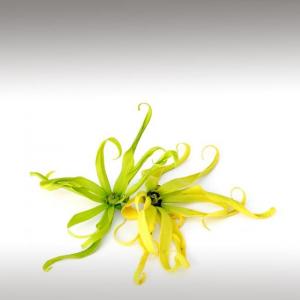

Botanical Name: Cananga Odorata
Botanical Origin: Philippines
Common Method of Extraction: Steam distilled.
Distillation Type: Complete (after 15 hours), Extra (after 15 hours), I (after 4 hours), , II (after 7hours) , III (after 10 hours) ;
Part Typically Used: Fresh flowers
Color: Clear with a yellow tinge
Consistency: Liquid, clear
Perfumery Note: Middle/base
Shelf Life: 2-3 years
Strength of Initial Aroma: Floral, heady, exotic, intensely sweet, fresh, slightly fruity, fragrant yet delicate.
Blends Well With: Clary sage, geranium, lavender, lemon, bergamot, rose, orange, patchouli, grapefruits, rosewood, sandalwood, tuberose, vetiver, peru balsam, petitgrain, frankincense, jasmine essential oils.
Common name: Ylang-Ylang is sometimes called the other tree - Anona Odorantissima (Cananga), but there are suggestions that it is one and the same plant, which varies depending on growing conditions and soil type. Both Ylang-Ylang and Cananga are members of the Annonaceae plant family; they also both belong to the same genus - Cananga. Even their species is confusing; both are Odorata species. The small distinguishing feature that separates these two very similar plants is in the addition of the words var. genuina to Ylang-Ylang’s botanical name and the addition of var. Macrophylla to Cananga’s botanical name. This is simply a “lower” rank than that of a species in the botanical ranking system, and it helps to separate out the subtle differences between each plant. In fact, the two plants are so similar, and produce such similar essential oils, that you will notice some suppliers (mistakenly) selling Cananga essential oil as Ylang-Ylang essential oil.
Ylang-ylang essential oil is a more floral oil than Cananga essential oil. Therefore, those that find the heady aroma of Ylang-Ylang essential oil too much may prefer the aroma of Cananga essential oil. Note that the chemical components of each oil also vary.
Chemical structure: The chief components of the essential oil of Ylang-Ylang are benzyl acetate, benzyl benzoate linalool, caryophyllene, geranyl acetate, methyl benzoate, p-cresyl methyl ether and other components known as sesquiterpenes, which all contribute to its aroma and medicinal properties.
Note: Depending on your condition and what you want to use it for, it can double as both a relaxant and a stimulant.
Ylang-Ylang comes from a Tagalog word “Ilang” meaning “Wilderness” or the word “Ilang-Ilan” meaning “Rare”.
The trees (Cananga Odorata) from which the essential oil is distilled - known as perfume trees - originated in the Philippines and have now spread throughout tropical Asia. They were introduced to the island of Reunion in 1884, then to Madagascar, nearby Mayotte and Tahiti: they can be found in the wild in Malaysia, India and Indochina.
The trees are generally small, but can reach a height of about 30 m (100 ft). The bark is smooth, with shallow cracks, and the branches "weep" like willow. The leaves are large, oval and shiny, as much as 20 cm (8 in) long, with a slightly hairy underside. The flowers form in axillary clusters, greenish to start with, then, about 20 days later, they become yellow and very highly perfumed. These flowers appear constantly, but are more abundant in the rainy season. A many-seeded, greenish fruit succeeds the flowers.
Many varieties of the tree are cultivated for their essential oil, the ones bearing the smallest flowers producing the most subtle perfume. Strangely, the flowers of the wild trees have little perfume. A young tree of about 5 years old yields about 5 kg flowers: when it reaches the age of 10 years, it can give as much as 10-15 kg.
Primary distillation stage (about an hour) are of the highest quality, known as Ylang-Ylang Extra, has super floral flavor, special complex chemical composition, and used in perfumery. Subsequent parts of distillate are much poorer, lighter and less floral - I st Fraction (after 4 hours), II nd Group (after 7hours) III rd Group (after 10 hours) And Complete - Full distillate is 15 hours. The best oil is obtained from the early summer and early in the morning collected flower rings:
The quality of Ylang-Ylang oil depends a lot on the cultivation of the flowers that are used - specifically the time of day that the flowers were picked. It’s believed that flowers picked early in the morning yield the most beneficial oil, since the flowers are pollinated by night moths. The drop in temperature and dewiness that can occur overnight might also have positive effects on the oil’s chemical structure. The most intensive smell is released from dusk until dawn so when sunrise comes, the flowers natural aroma fills the air.
The 15-hour-long distillation process used to Extract Ylang-Ylang oil also impacts its potency and abilities. Steam distillation is the preferred method since this preserves the oil’s volatile compounds best. And during the long distillation process, the proportion of oil that is extracted first is believed to be the highest quality of the whole batch - often called “Ylang-Ylang Complete” or “Ylang-Ylang Extra”.
The oil is very liquid, clear and has an extraordinary fragrance, with high notes of Hyacinth and Narcissus.
According to a 2014 report published in the Journal of Experimental Botany, the floral scents of Ylang-Ylang are a key factor in plant-insect interactions and are vital for successful pollination since they repel pests and bugs.
Botanical Origin: Philippines
Common Method of Extraction: Steam distilled.
Distillation Type: Complete (after 15 hours), Extra (after 15 hours), I (after 4 hours), , II (after 7hours) , III (after 10 hours) ;
Part Typically Used: Fresh flowers
Color: Clear with a yellow tinge
Consistency: Liquid, clear
Perfumery Note: Middle/base
Shelf Life: 2-3 years
Strength of Initial Aroma: Floral, heady, exotic, intensely sweet, fresh, slightly fruity, fragrant yet delicate.
Blends Well With: Clary sage, geranium, lavender, lemon, bergamot, rose, orange, patchouli, grapefruits, rosewood, sandalwood, tuberose, vetiver, peru balsam, petitgrain, frankincense, jasmine essential oils.
Common name: Ylang-Ylang is sometimes called the other tree - Anona Odorantissima (Cananga), but there are suggestions that it is one and the same plant, which varies depending on growing conditions and soil type. Both Ylang-Ylang and Cananga are members of the Annonaceae plant family; they also both belong to the same genus - Cananga. Even their species is confusing; both are Odorata species. The small distinguishing feature that separates these two very similar plants is in the addition of the words var. genuina to Ylang-Ylang’s botanical name and the addition of var. Macrophylla to Cananga’s botanical name. This is simply a “lower” rank than that of a species in the botanical ranking system, and it helps to separate out the subtle differences between each plant. In fact, the two plants are so similar, and produce such similar essential oils, that you will notice some suppliers (mistakenly) selling Cananga essential oil as Ylang-Ylang essential oil.
Ylang-ylang essential oil is a more floral oil than Cananga essential oil. Therefore, those that find the heady aroma of Ylang-Ylang essential oil too much may prefer the aroma of Cananga essential oil. Note that the chemical components of each oil also vary.
Chemical structure: The chief components of the essential oil of Ylang-Ylang are benzyl acetate, benzyl benzoate linalool, caryophyllene, geranyl acetate, methyl benzoate, p-cresyl methyl ether and other components known as sesquiterpenes, which all contribute to its aroma and medicinal properties.
Note: Depending on your condition and what you want to use it for, it can double as both a relaxant and a stimulant.
Ylang-Ylang comes from a Tagalog word “Ilang” meaning “Wilderness” or the word “Ilang-Ilan” meaning “Rare”.
The trees (Cananga Odorata) from which the essential oil is distilled - known as perfume trees - originated in the Philippines and have now spread throughout tropical Asia. They were introduced to the island of Reunion in 1884, then to Madagascar, nearby Mayotte and Tahiti: they can be found in the wild in Malaysia, India and Indochina.
The trees are generally small, but can reach a height of about 30 m (100 ft). The bark is smooth, with shallow cracks, and the branches "weep" like willow. The leaves are large, oval and shiny, as much as 20 cm (8 in) long, with a slightly hairy underside. The flowers form in axillary clusters, greenish to start with, then, about 20 days later, they become yellow and very highly perfumed. These flowers appear constantly, but are more abundant in the rainy season. A many-seeded, greenish fruit succeeds the flowers.
Many varieties of the tree are cultivated for their essential oil, the ones bearing the smallest flowers producing the most subtle perfume. Strangely, the flowers of the wild trees have little perfume. A young tree of about 5 years old yields about 5 kg flowers: when it reaches the age of 10 years, it can give as much as 10-15 kg.
Primary distillation stage (about an hour) are of the highest quality, known as Ylang-Ylang Extra, has super floral flavor, special complex chemical composition, and used in perfumery. Subsequent parts of distillate are much poorer, lighter and less floral - I st Fraction (after 4 hours), II nd Group (after 7hours) III rd Group (after 10 hours) And Complete - Full distillate is 15 hours. The best oil is obtained from the early summer and early in the morning collected flower rings:
The quality of Ylang-Ylang oil depends a lot on the cultivation of the flowers that are used - specifically the time of day that the flowers were picked. It’s believed that flowers picked early in the morning yield the most beneficial oil, since the flowers are pollinated by night moths. The drop in temperature and dewiness that can occur overnight might also have positive effects on the oil’s chemical structure. The most intensive smell is released from dusk until dawn so when sunrise comes, the flowers natural aroma fills the air.
The 15-hour-long distillation process used to Extract Ylang-Ylang oil also impacts its potency and abilities. Steam distillation is the preferred method since this preserves the oil’s volatile compounds best. And during the long distillation process, the proportion of oil that is extracted first is believed to be the highest quality of the whole batch - often called “Ylang-Ylang Complete” or “Ylang-Ylang Extra”.
The oil is very liquid, clear and has an extraordinary fragrance, with high notes of Hyacinth and Narcissus.
According to a 2014 report published in the Journal of Experimental Botany, the floral scents of Ylang-Ylang are a key factor in plant-insect interactions and are vital for successful pollination since they repel pests and bugs.
Submitted by OperaDreamhouse (May 1, 2014)
Ylang-Ylang Essential Oil (Cananga Odorata) ☸ Essential oils ☸ Medicine / Health


Therapeutic Properties :
Antidepressant
Antiseborrhoeic
Antiseptic
Aphrodisiac
Hypotensive
Nervine
Sedative
Fields of application: Increases libido, aphrodisiac and social enhancerfights, depression, induces relaxed feeling, strengthens nervous system, cures seborrhoea, lowers blood pressure, prevents septic infections, cures infections in internal organs, fighting parasites, regulating heartbeat, healing cardiac problems, promoting healthy intestinal function, preservering skin health, reducing PMS symptoms, natural hair care product, diabetes fighter, classified as a pulmonary and urinary system antiseptic,helps to deal with nervous tic.
Contraindications: It is classed as a non-toxic, non-irritant and non-sensitizing oil. Some cases of sensitivity, nausea and headache have been observed when taken in excessive amounts. Otherwise, when taken in recommended doses, it is non-toxic and is not reported to cause any irritation.
Use Ylang-Ylang sparingly whether internally or topically. High levels might cause reactions and sensitives, so be sure to do a skin patch check first before using on your face, skin or ingesting. You also want to use caution when dealing with low blood pressure. If you take blood pressure medications or have an existing heart condition, talk to your doctor before beginning treatment.
Pregnancy / Lactation : It should be avoided by pregnant women as it is a uterine stimulant and could cause miscarriages. Ylang-ylang oil seems safe for children, women who are breastfeeding women in small amounts when a high-quality oil is used.
Children: Uder 2 years.
Guidelines: Diluted : for topical use : recommend dermal maximum of 0.8%
Ylang-Ylang is exotic, intense and exciting. it’s believed that its healing properties can help in cases of impotence and frigidity. It can help dispel feelings of anger, jealousy and envy. With its sensual and soothing aroma, helps restore self-confidence and allows you to express and appreciate your inner beauty. Ylang-Ylang flowers are strewn on the beds of newly married South-Asian couples on their wedding night.
The essential oil derived from Ylang-Ylang can really activate the romance within couples and can improve sexual life. This can be very beneficial for those people who have lost interest in sex due to tremendous work load, professional stress, depression, or the effects of pollution. The loss of libido or frigidity is a growing problem in modern life, but relying on natural essential oils like Ylang-Ylang can really help to find your sex drive.
Ylang-Ylang essential oil is a health booster for the nervous system. It strengthens the nervous system and repairs any damage it may have suffered: Ylang-Ylang essential oil (Cananga Odorata) fights depression and relaxes both the body and soul, thereby driving away anxiety, sadness, and chronic stress. It also has an uplifting effect on mood and induces feelings of joy and hope. It may be an effective treatment for those undergoing nervous breakdowns and acute depression after a shock or an accident.
Studies show that high-quality Ylang-Ylang oil holds a high percentage of active constituents called terpenoids. Isolated terpenoid derivatives (including canangaterpenes IV-VI) show promising results as natural therapeutic agents for the treatment of several skin disorders. When tested on cancerous melanoma skin cells, terpenoid compounds exhibit a potent inhibitory effect on cell melanogenesis and immune-system cytotoxicity. In other words, antioxidants in ylang ylang oil help protect skin cells from oxidative stress and DNA damage that can lead to cancer cell formation.
Researchers from the Phytochemistry Research Department at the University of Rajshahi in Bangladesh found that these phytochemicals also possess antibacterial, antifungal and cytotoxic activities when used topically or internally by humans. They can help improve immune function and lower inflammation, which is a leading contributor to most diseases, such as cancer, heart disease, autoimmune and cognitive-related disorders.
This oil is a very effective agent for lowering blood pressure. In recent times, since high blood pressure is a major health epidemic among both the young and the old, Ylang-Ylang essential oil can be an easy and natural solution. It has no adverse side effects on health, if taken in prescribed quantities.
Studies have also shown that Ylang-Ylang essential oil can inhibit the fungi, Candida albicans, at concentrations of just 1%. That makes it a potent antifungal oil.
Health wise, Ylang-Ylang helps ease the nervous system lessening tension, anxiety and promoting a peaceful, and calming ambiance.
Thanks to its calming and sedative qualities, Ylang-Ylang oil can assist with problems such as high blood pressure, rapid breathing and heartbeat. Helps with anxiety, tension, shock, fear and panic. In fact all nervous conditions.
Its calming properties are great for insomniacs down to a point where they may actually desire sleep.
Antidepressant
Antiseborrhoeic
Antiseptic
Aphrodisiac
Hypotensive
Nervine
Sedative
Fields of application: Increases libido, aphrodisiac and social enhancerfights, depression, induces relaxed feeling, strengthens nervous system, cures seborrhoea, lowers blood pressure, prevents septic infections, cures infections in internal organs, fighting parasites, regulating heartbeat, healing cardiac problems, promoting healthy intestinal function, preservering skin health, reducing PMS symptoms, natural hair care product, diabetes fighter, classified as a pulmonary and urinary system antiseptic,helps to deal with nervous tic.
Contraindications: It is classed as a non-toxic, non-irritant and non-sensitizing oil. Some cases of sensitivity, nausea and headache have been observed when taken in excessive amounts. Otherwise, when taken in recommended doses, it is non-toxic and is not reported to cause any irritation.
Use Ylang-Ylang sparingly whether internally or topically. High levels might cause reactions and sensitives, so be sure to do a skin patch check first before using on your face, skin or ingesting. You also want to use caution when dealing with low blood pressure. If you take blood pressure medications or have an existing heart condition, talk to your doctor before beginning treatment.
Pregnancy / Lactation : It should be avoided by pregnant women as it is a uterine stimulant and could cause miscarriages. Ylang-ylang oil seems safe for children, women who are breastfeeding women in small amounts when a high-quality oil is used.
Children: Uder 2 years.
Guidelines: Diluted : for topical use : recommend dermal maximum of 0.8%
Ylang-Ylang is exotic, intense and exciting. it’s believed that its healing properties can help in cases of impotence and frigidity. It can help dispel feelings of anger, jealousy and envy. With its sensual and soothing aroma, helps restore self-confidence and allows you to express and appreciate your inner beauty. Ylang-Ylang flowers are strewn on the beds of newly married South-Asian couples on their wedding night.
The essential oil derived from Ylang-Ylang can really activate the romance within couples and can improve sexual life. This can be very beneficial for those people who have lost interest in sex due to tremendous work load, professional stress, depression, or the effects of pollution. The loss of libido or frigidity is a growing problem in modern life, but relying on natural essential oils like Ylang-Ylang can really help to find your sex drive.
Ylang-Ylang essential oil is a health booster for the nervous system. It strengthens the nervous system and repairs any damage it may have suffered: Ylang-Ylang essential oil (Cananga Odorata) fights depression and relaxes both the body and soul, thereby driving away anxiety, sadness, and chronic stress. It also has an uplifting effect on mood and induces feelings of joy and hope. It may be an effective treatment for those undergoing nervous breakdowns and acute depression after a shock or an accident.
Studies show that high-quality Ylang-Ylang oil holds a high percentage of active constituents called terpenoids. Isolated terpenoid derivatives (including canangaterpenes IV-VI) show promising results as natural therapeutic agents for the treatment of several skin disorders. When tested on cancerous melanoma skin cells, terpenoid compounds exhibit a potent inhibitory effect on cell melanogenesis and immune-system cytotoxicity. In other words, antioxidants in ylang ylang oil help protect skin cells from oxidative stress and DNA damage that can lead to cancer cell formation.
Researchers from the Phytochemistry Research Department at the University of Rajshahi in Bangladesh found that these phytochemicals also possess antibacterial, antifungal and cytotoxic activities when used topically or internally by humans. They can help improve immune function and lower inflammation, which is a leading contributor to most diseases, such as cancer, heart disease, autoimmune and cognitive-related disorders.
This oil is a very effective agent for lowering blood pressure. In recent times, since high blood pressure is a major health epidemic among both the young and the old, Ylang-Ylang essential oil can be an easy and natural solution. It has no adverse side effects on health, if taken in prescribed quantities.
Studies have also shown that Ylang-Ylang essential oil can inhibit the fungi, Candida albicans, at concentrations of just 1%. That makes it a potent antifungal oil.
Health wise, Ylang-Ylang helps ease the nervous system lessening tension, anxiety and promoting a peaceful, and calming ambiance.
Thanks to its calming and sedative qualities, Ylang-Ylang oil can assist with problems such as high blood pressure, rapid breathing and heartbeat. Helps with anxiety, tension, shock, fear and panic. In fact all nervous conditions.
Its calming properties are great for insomniacs down to a point where they may actually desire sleep.
Submitted by OperaDreamhouse (May 1, 2014)
Ylang-Ylang Essential Oil (Cananga Odorata) ☸ Essential oils ☸ Beauty / Cosmetics


Topically, Ylang-Ylang essential oil has been praised for helping combat acne and oily skin. It may help with alopecia (hair loss).
Ylang-Ylang can do wonders for your skin’s health and appearance. It can help preserve the youthful look of your face and body and help to rejuvenate areas of the skin that are looking tired and old.
This essential oil has a balancing and stimulating effect on skin. It's a great oil because it can help with over-dry and over-oily skin - it balances the secretion of sebum. It also has a stimulating effect on the scalp, and is often used to help hair growth.
Ylang-Ylang has skin balancing properties and blend into a cream or lotion to help with both over-dry and over-oily skin.
Add a drop of Ylang-Ylang oil to your palms and rub together until you feel a slight warmth building, pause and take a few deep breaths to calm and relax. You can keep a bottle of Ylang-Ylang by your entry hall to inhale as you come home to transform the busy energy of the day into a calm, uplifted state.
Ylang-Ylang oil can be an effective massage oil, when used in combination with a base oil, such as Jojoba or Wheat Germ. Because the oil s so strong, it’s important to dilute it to avoid the risk of irritation. Thanks to its aphrodisiac properties and pleasant aroma, Ylang-Ylang oil is pefect for sensual couples massages.
The initial pressing of Ylang-Ylang is so sweet and fragrant, it’s oten used in high-end perfumes.
This oil may cause skin sensitivity to persons allergic to the compounds in Ylang-Ylang. In addition, such persons have also experienced dark spots and pigmented contact dermatitis.
On the skin, Ylang-Ylang oil has a soothing effect for skin by balancing the secretion of sebum, and has a stimulating effect on the scalp which promotes more luxurious hair growth.
Ylang-Ylang can do wonders for your skin’s health and appearance. It can help preserve the youthful look of your face and body and help to rejuvenate areas of the skin that are looking tired and old.
This essential oil has a balancing and stimulating effect on skin. It's a great oil because it can help with over-dry and over-oily skin - it balances the secretion of sebum. It also has a stimulating effect on the scalp, and is often used to help hair growth.
Ylang-Ylang has skin balancing properties and blend into a cream or lotion to help with both over-dry and over-oily skin.
Add a drop of Ylang-Ylang oil to your palms and rub together until you feel a slight warmth building, pause and take a few deep breaths to calm and relax. You can keep a bottle of Ylang-Ylang by your entry hall to inhale as you come home to transform the busy energy of the day into a calm, uplifted state.
Ylang-Ylang oil can be an effective massage oil, when used in combination with a base oil, such as Jojoba or Wheat Germ. Because the oil s so strong, it’s important to dilute it to avoid the risk of irritation. Thanks to its aphrodisiac properties and pleasant aroma, Ylang-Ylang oil is pefect for sensual couples massages.
The initial pressing of Ylang-Ylang is so sweet and fragrant, it’s oten used in high-end perfumes.
This oil may cause skin sensitivity to persons allergic to the compounds in Ylang-Ylang. In addition, such persons have also experienced dark spots and pigmented contact dermatitis.
On the skin, Ylang-Ylang oil has a soothing effect for skin by balancing the secretion of sebum, and has a stimulating effect on the scalp which promotes more luxurious hair growth.
Submitted by OperaDreamhouse (May 1, 2014)
Ylang-Ylang Essential Oil (Cananga Odorata) ☸ Essential oils ☸ Spiritual Practises


Ylang-ylang oil is said to work with the cardiovascular, endocrine and hormonal system as well as supporting emotional and spiritual balance. Many of these properties and the potential uses for Ylang-Ylang are those that closely link the body to the emotions or the mind, showing very clearly the mind-body connection and how nature can help our body find balance as a whole.
Ylang-Ylang essential oil is a health booster for the nervous system. It strengthens the nervous system and repairs any damage it may have suffered. Furthermore, it also reduces stress on the nerves and protects them from developing a number of nervous disorders.
In Chinese medicine, Ylang-Ylang is seen as energetically cool and moist, making it a Yin oil. It is associated with the Earth and Fire Elements.
Ylang-Ylang essential oil is said to help balance the Sacral and Solar Plexus Chakras.
Ylang-Ylang is an excellent Yang pacifying essential oil for Solar Plexus imbalances. It's cooling and clearing. It clears anger, frustration and other emotionally charged or agitated states. Ylang-Ylang makes one feel lovable, joyful and peaceful. Consequently, it promotes enthusiasm and confidence.
Ylang-Ylang essential oil is a health booster for the nervous system. It strengthens the nervous system and repairs any damage it may have suffered. Furthermore, it also reduces stress on the nerves and protects them from developing a number of nervous disorders.
In Chinese medicine, Ylang-Ylang is seen as energetically cool and moist, making it a Yin oil. It is associated with the Earth and Fire Elements.
Ylang-Ylang essential oil is said to help balance the Sacral and Solar Plexus Chakras.
Ylang-Ylang is an excellent Yang pacifying essential oil for Solar Plexus imbalances. It's cooling and clearing. It clears anger, frustration and other emotionally charged or agitated states. Ylang-Ylang makes one feel lovable, joyful and peaceful. Consequently, it promotes enthusiasm and confidence.
Submitted by OperaDreamhouse (May 1, 2014)
Black Pine Essential Oil (Pinus Nigra) ☸ Essential oils ☸ Base / General
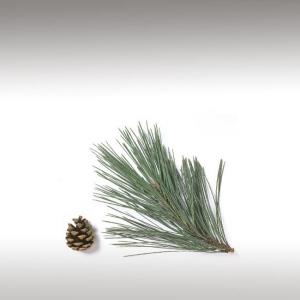

The European Black Pine Pinus nigra (generally called Black Pine in
Europe), is a variable species of pine, occurring across southern Europe
from Spain to the Crimea, and also in Asia Minor, Cyprus, and locally
in the Atlas Mountains of northwest Africa. It is found at elevations
ranging from sea level to 2,000 m, most commonly from 250¨C1,600 m.
Submitted by OperaDreamhouse (May 1, 2014)
Black Pine Essential Oil (Pinus Nigra) ☸ Essential oils ☸ Medicine / Health

 Pine essential oil is viewed as an analgesic, antibacterial, antibiotic, antifungal, antiseptic, and as an antiviral. Aromatherapists credit its use for inflammatory conditions and respiratory or circulatory ailments, and some infections due to its reported decongestant, deodorising, and cleansing properties.
Pine essential oil is viewed as an analgesic, antibacterial, antibiotic, antifungal, antiseptic, and as an antiviral. Aromatherapists credit its use for inflammatory conditions and respiratory or circulatory ailments, and some infections due to its reported decongestant, deodorising, and cleansing properties.Submitted by OperaDreamhouse (May 1, 2014)
Apricot Kernel Oil (Prunus Armeniaca) ☸ Base oils ☸ Base / General
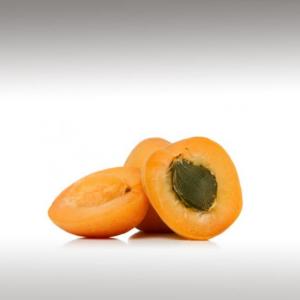

The Apricot, known formally as Prunus Armeniaca, is a small, yellow to orange, soft fruit with a single pit inside. At the core of the pit is the kernel, which can be pressed to yield Apricot Kernel oil. The plant is cultivated in different parts of the world such as Australia,Persia, Armenia, China, Iran and Japan. The plant is native to the continental climate region and can grow in the Mediterranean region.
The Apricot tree is cultivated throughout the Northern Hemisphere. Apricot Kernel oil has 30% unsaturated essential fatty acidcontent.
Apricot Kernel oil is cold-pressed from the dried seeds of the fruit of the Apricot tree. This natural oil is light-colored and fragrant, imparting a somewhat nutty aroma. Apricot Kernel oil is rich in fatty acids and Vitamins A, C and E. This makes the oil highly nutritious.
Kernels are sometimes used whole to make distilled liquors such as Amaretto.
The Apricot oil is similar to Almond oil and Peach oil, both of which are also extracted from the kernels of the respective fruit. Apricot Kernel oil is cold-pressed from the dried seeds of the fruit of the Apricot tree.
Chemical structure:
All of the Apricot Kernels contained between 40,23% and 53,19 % oil. In addition, the samples contained up to 70,83% oleic acid, 21,96% percent linoleic acid and smaller amounts of palmitic and stearic acids.
the chemical structure of Apricot Kernel oil makes it more susceptible to turning rancid from lipid peroxidation, the presence of natural antioxidants, such as Vitamins C and E, help to offset decomposition and extend shelf life. It is recommended that within three months after opening the bottle, the oil should be used.
The kernels have an oil content of 40-50%. Cool and dark place at a temperature of 7-25 C. At low temperature it tends to thicken, when heated the oil gets back to normal. In improper storage room, the oil starts to become rancid.
The Apricot tree is cultivated throughout the Northern Hemisphere. Apricot Kernel oil has 30% unsaturated essential fatty acidcontent.
Apricot Kernel oil is cold-pressed from the dried seeds of the fruit of the Apricot tree. This natural oil is light-colored and fragrant, imparting a somewhat nutty aroma. Apricot Kernel oil is rich in fatty acids and Vitamins A, C and E. This makes the oil highly nutritious.
Kernels are sometimes used whole to make distilled liquors such as Amaretto.
The Apricot oil is similar to Almond oil and Peach oil, both of which are also extracted from the kernels of the respective fruit. Apricot Kernel oil is cold-pressed from the dried seeds of the fruit of the Apricot tree.
Chemical structure:
All of the Apricot Kernels contained between 40,23% and 53,19 % oil. In addition, the samples contained up to 70,83% oleic acid, 21,96% percent linoleic acid and smaller amounts of palmitic and stearic acids.
the chemical structure of Apricot Kernel oil makes it more susceptible to turning rancid from lipid peroxidation, the presence of natural antioxidants, such as Vitamins C and E, help to offset decomposition and extend shelf life. It is recommended that within three months after opening the bottle, the oil should be used.
The kernels have an oil content of 40-50%. Cool and dark place at a temperature of 7-25 C. At low temperature it tends to thicken, when heated the oil gets back to normal. In improper storage room, the oil starts to become rancid.
Submitted by OperaDreamhouse (April 24, 2014)
Apricot Kernel Oil (Prunus Armeniaca) ☸ Base oils ☸ Food / Cooking


Apricot Kernel oil is encapsulated for use a dietary supplement because it is an excellent source of essential fatty acids and antioxidants. This oil is excellent to use for high-temperature frying and cooking.
Food grade Apricot Kernel oil can be used as a salad oil or drizzled on other foods. It is not usually used for cooking, because of the expense.
Food grade Apricot Kernel oil can be used as a salad oil or drizzled on other foods. It is not usually used for cooking, because of the expense.
Submitted by OperaDreamhouse (April 24, 2014)
Apricot Kernel Oil (Prunus Armeniaca) ☸ Base oils ☸ Medicine / Health


Apricot Kernel oil is also used in traditional Chinese and Tibetan medicine to treat inflammatory skin disorders, often in combination with other botanical materials.
The nourishing properties of apricot kernel seed oil have an anti-inflammatory effect and may soothe minor skin conditions such as eczema.
The oil increases the flow of energy, balances the nervous system, and aids in physical harmony.
In massage procese Apricot Kernel oil reducing stress, pain and inflammation and instilling an overall sense of well-being. Apricot kernel oil is also very mild and non-irritating, making it suitable for children and infant massage.
The British used the oil for stomach ulcers. The oil is used to treat respiratory problems such as bronchitis. Even constipation can be treated with the oil.
Apricot Kernel oil is used in the treatment ofear aches. It is very good for burns, sunburns, cuts, wounds, scars, muscular pain, rashes, skin irritation.
The nourishing properties of apricot kernel seed oil have an anti-inflammatory effect and may soothe minor skin conditions such as eczema.
The oil increases the flow of energy, balances the nervous system, and aids in physical harmony.
In massage procese Apricot Kernel oil reducing stress, pain and inflammation and instilling an overall sense of well-being. Apricot kernel oil is also very mild and non-irritating, making it suitable for children and infant massage.
The British used the oil for stomach ulcers. The oil is used to treat respiratory problems such as bronchitis. Even constipation can be treated with the oil.
Apricot Kernel oil is used in the treatment ofear aches. It is very good for burns, sunburns, cuts, wounds, scars, muscular pain, rashes, skin irritation.
Stimulates hair growth and skin rejuvenation.
Submitted by OperaDreamhouse (April 24, 2014)
Avocado Oil (Persea Gratissima) ☸ Base oils ☸ Base / General
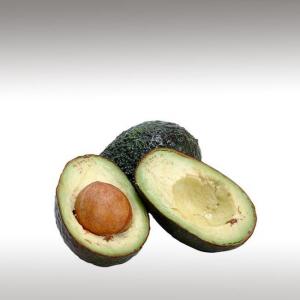

The tree is a member of the Laurel (Lauraceae) family and there are approximately 500 varieties, which produce fruits ranging from small and egg-like to heavy, pear-shaped fruits. The Aztecs believed the Avocado had aphrodisiacqualities because of its shape. The name Avocado is derived from the Mexican name "Ahuacatl", a shortening ofthe Aztec name "Ahuacacuahatl".
Cold-pressing the flesh of the Avocado makes Avocado oil. It takes ten fruits to produce one teaspoon of the rich and thick oil. This oil absorbs easily and it is full of beneficialfatty acids and vitamins.
They are the fruit of a subtropical tree, native to Mexico and South America.
Avocado oil is one of few edible oils not derived from seeds. It is pressed from the fleshy pulp surrounding the Avocado pit.
Persea Gratissima (Avocado) oil is obtained by pressing dehydrated, sliced avocados of Persea Gratissima. Following pre-drying of the Avocado flesh to remove as much water as possible (65% water in Avocado flesh), Avocado oil for cosmetics is traditionally extracted with solvents at elevated temperatures.
Cold-pressed "Hass" Avocado oil has been described as having an Avocado flavor, with grassy and butter/mushroom-like flavors.
Chemical structure:
Avocado contains more than 20% essential unsaturated fatty acids, Vitamins A, B, C and E, proteins, lecithin and potassium (the latter of which is sometimes called the "Youth mineral"). Avocado oil functions well as a carrier oil for other flavors. It is high in monounsaturated fats and Vitamin E. Avocado oil also enhances the absorption of carotenoids and other nutrients.
Avocado oil is rich in triglycerides of oleic acid and contains lesser amounts of palmitic, linoleic, and palmitoleic acids. The amount of fat in Avocados varies depending on the area in which it is grown and the degree of ripeness of the fruit.
Avocado oil is naturally low acidic, helping to increase smoke point. An extra virgin Avocado oil, characterized by a deep emerald green color (from Avocado's chlorophyll content) can safely be heated to degree of 249 °C.
Cold-pressing the flesh of the Avocado makes Avocado oil. It takes ten fruits to produce one teaspoon of the rich and thick oil. This oil absorbs easily and it is full of beneficialfatty acids and vitamins.
They are the fruit of a subtropical tree, native to Mexico and South America.
Avocado oil is one of few edible oils not derived from seeds. It is pressed from the fleshy pulp surrounding the Avocado pit.
Persea Gratissima (Avocado) oil is obtained by pressing dehydrated, sliced avocados of Persea Gratissima. Following pre-drying of the Avocado flesh to remove as much water as possible (65% water in Avocado flesh), Avocado oil for cosmetics is traditionally extracted with solvents at elevated temperatures.
Cold-pressed "Hass" Avocado oil has been described as having an Avocado flavor, with grassy and butter/mushroom-like flavors.
Chemical structure:
Avocado contains more than 20% essential unsaturated fatty acids, Vitamins A, B, C and E, proteins, lecithin and potassium (the latter of which is sometimes called the "Youth mineral"). Avocado oil functions well as a carrier oil for other flavors. It is high in monounsaturated fats and Vitamin E. Avocado oil also enhances the absorption of carotenoids and other nutrients.
Avocado oil is rich in triglycerides of oleic acid and contains lesser amounts of palmitic, linoleic, and palmitoleic acids. The amount of fat in Avocados varies depending on the area in which it is grown and the degree of ripeness of the fruit.
Avocado oil is naturally low acidic, helping to increase smoke point. An extra virgin Avocado oil, characterized by a deep emerald green color (from Avocado's chlorophyll content) can safely be heated to degree of 249 °C.
Submitted by OperaDreamhouse (April 24, 2014)
Avocado Oil (Persea Gratissima) ☸ Base oils ☸ Beauty / Cosmetics


Suitable for dry and mature skin types.
Avocado oil was originally, and still is, extracted for cosmetic use because of its very high skin penetration and rapid absorption. Oil is used in many different products, including bath products, eye makeup, lipstick, makeup bases, cleansing cream, hair conditioners, sunscreen lotions, as well skin and hair care products.
The most beneficial qualities of Avocado Oil for skin rejuvenation include increased levels of collagen production deriving from the fact that it can penetrate the skin more deeply, relief of damaged skin caused by sun exposure, treatment ofdry skin for deep moisturization. It is also recommended for fine lines and wrinkles and is said to help protect skin from the effects of ultraviolet rays.
It is also used for lubrication and in cosmetics, where it is valued for its supposed regenerative properties. Avocado Oil used regularly can result in wrinkle-free, youthful, elastic skin that gives a soothing effect to dry skin.
Avocado oil is reputed to be beneficial in reducing age spotsand the appearance of scars because it has a high content of unsaponifiables (sterolins) that soften and moisturize skin’s upper layer.
Avocado oil functions well as a carrier oil for other flavors. It is high in monounsaturated fatsand Vitamin E. Avocado oil also enhances the absorption of carotenoids and other nutrients.
Unrulyor dry hair will benefit from Avocado: rich and nourishing, it helps to add strength and shine and conditions the hair, too. Avocado oil can use ass hair conditioner to add weight, and to restore shine.
Avocado oil was originally, and still is, extracted for cosmetic use because of its very high skin penetration and rapid absorption. Oil is used in many different products, including bath products, eye makeup, lipstick, makeup bases, cleansing cream, hair conditioners, sunscreen lotions, as well skin and hair care products.
The most beneficial qualities of Avocado Oil for skin rejuvenation include increased levels of collagen production deriving from the fact that it can penetrate the skin more deeply, relief of damaged skin caused by sun exposure, treatment ofdry skin for deep moisturization. It is also recommended for fine lines and wrinkles and is said to help protect skin from the effects of ultraviolet rays.
It is also used for lubrication and in cosmetics, where it is valued for its supposed regenerative properties. Avocado Oil used regularly can result in wrinkle-free, youthful, elastic skin that gives a soothing effect to dry skin.
Avocado oil is reputed to be beneficial in reducing age spotsand the appearance of scars because it has a high content of unsaponifiables (sterolins) that soften and moisturize skin’s upper layer.
Avocado oil functions well as a carrier oil for other flavors. It is high in monounsaturated fatsand Vitamin E. Avocado oil also enhances the absorption of carotenoids and other nutrients.
Unrulyor dry hair will benefit from Avocado: rich and nourishing, it helps to add strength and shine and conditions the hair, too. Avocado oil can use ass hair conditioner to add weight, and to restore shine.
Submitted by OperaDreamhouse (April 24, 2014)
Sesame Oil (Sesamum Indicum) ☸ Base oils ☸ Base / General
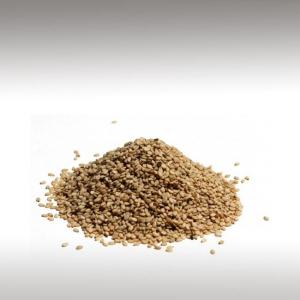

Sesamum Indicum (Sesame) Seed oil is a pale yellow oil made from Sesame seeds. It is one of the oldest oil crops and is widely cultivated in Asia and Africa.
It was a highly prized oil crop of Babylon and Assyria at least 4000 years ago.The Sanskrit word for oil,"Taila" is derived from the Sanskrit word for "Sesame Tila".
Sesame is growing intropical, subtropical, and southern temperate areas of the world, particularly in India, China, Africa and South Africa. In India about 80% seeds of total production being use for oil extraction.
The plant is erect, simple or branched annual, 60 - 180 cm. in height. The petals of the flower is tubular, approximately 3 cm long, with an applicate margin slightly bilabiate. The fruit is a capsule, erect and oblong. The capsule contains numerous small ovate seeds.
Sesamum Indicum oil-rich seeds, which come in a variety of colors, from cream-white to charcoal-black. Seeds grow in pods, which burst open at maturity, giving rise to the phrase "Open sesame"
Sesame seed is one of the oldest oilseed crops known, domesticated well over 3000 years ago. Charred remains of sesame at Harappa excavations (3600 - 1750 B.C.) indicate that Sesame was in cultivation during the Indus Valley Civilization. Sesame Seeds were introduced to the US by African slaves.
Today, India and China are the world's largest producers of sesame, followed by Burma, Sudan, Mexico, Nigeria, Venezuela, Turkey, Uganda and Ethiopia.
Chemical structure:
Sesame Seed has higher oil content( around 50%) than most of the known oil seeds. The seed has 40 - 60% of oil with almost equal levels of oleic (range 33 - 50%, typically 41%) and linoleic acids (range 33 - 50%, typically 43%) and some palmitic acid (range 7 - 12%, typically 9%) and stearic acid (range 3 - 6%, typically 6%).
Sesame seed oil, like Sunflower Seed oil, is rich in omega - 6 fatty acids, but lacks omega- 3 fatty acids. Sesame seed is also rich in protein, at 25% by weight.
Sesame oil is one of the most stable vegetable oils, with long shelf life, because of the high level of natural antioxidants(sesamin, sesamolin, and sesamol).
Other beneficial nutrients in Sesame oil include phosphorus, copper, calcium, zinc and magnesium.
It was a highly prized oil crop of Babylon and Assyria at least 4000 years ago.The Sanskrit word for oil,"Taila" is derived from the Sanskrit word for "Sesame Tila".
Sesame is growing intropical, subtropical, and southern temperate areas of the world, particularly in India, China, Africa and South Africa. In India about 80% seeds of total production being use for oil extraction.
The plant is erect, simple or branched annual, 60 - 180 cm. in height. The petals of the flower is tubular, approximately 3 cm long, with an applicate margin slightly bilabiate. The fruit is a capsule, erect and oblong. The capsule contains numerous small ovate seeds.
Sesamum Indicum oil-rich seeds, which come in a variety of colors, from cream-white to charcoal-black. Seeds grow in pods, which burst open at maturity, giving rise to the phrase "Open sesame"
Sesame seed is one of the oldest oilseed crops known, domesticated well over 3000 years ago. Charred remains of sesame at Harappa excavations (3600 - 1750 B.C.) indicate that Sesame was in cultivation during the Indus Valley Civilization. Sesame Seeds were introduced to the US by African slaves.
Today, India and China are the world's largest producers of sesame, followed by Burma, Sudan, Mexico, Nigeria, Venezuela, Turkey, Uganda and Ethiopia.
Chemical structure:
Sesame Seed has higher oil content( around 50%) than most of the known oil seeds. The seed has 40 - 60% of oil with almost equal levels of oleic (range 33 - 50%, typically 41%) and linoleic acids (range 33 - 50%, typically 43%) and some palmitic acid (range 7 - 12%, typically 9%) and stearic acid (range 3 - 6%, typically 6%).
Sesame seed oil, like Sunflower Seed oil, is rich in omega - 6 fatty acids, but lacks omega- 3 fatty acids. Sesame seed is also rich in protein, at 25% by weight.
Sesame oil is one of the most stable vegetable oils, with long shelf life, because of the high level of natural antioxidants(sesamin, sesamolin, and sesamol).
Other beneficial nutrients in Sesame oil include phosphorus, copper, calcium, zinc and magnesium.
Submitted by OperaDreamhouse (April 24, 2014)
Distillation Apparatus ☸ Tools ☸ Base / General
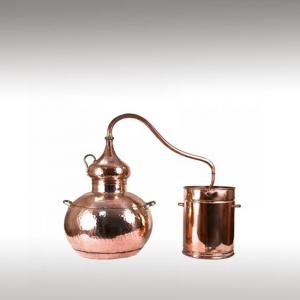
 Herbal Distillates are aqueous products of distillation. They are
colloidal suspensions (Hydrosol) of essential oils as well as water
soluble components obtained by steam distillation or hydro distillation
from plants/herbs.
Herbal Distillates are aqueous products of distillation. They are
colloidal suspensions (Hydrosol) of essential oils as well as water
soluble components obtained by steam distillation or hydro distillation
from plants/herbs. These Herbal Distillates have uses as flavorings, medicine and in skin care.
Herbal Distillates go by many other names including Floral Water, Hydrosol, Hydrolate, Herbal Water and Essential Water.
Submitted by OperaDreamhouse (April 5, 2014)
Essential Oil Diffuser ☸ Tools ☸ Base / General
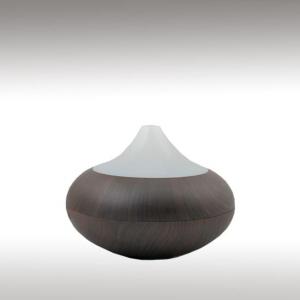
 Diffusion is the process of dispersing essential oils so that their
aroma fills a room or an area with the natural fragrance. From the
simple to the elaborate, many different methods exist for diffusing
essential oils into a room.
Diffusion is the process of dispersing essential oils so that their
aroma fills a room or an area with the natural fragrance. From the
simple to the elaborate, many different methods exist for diffusing
essential oils into a room.
Submitted by OperaDreamhouse (April 5, 2014)
Mini Hand Mixer ☸ Tools ☸ Base / General
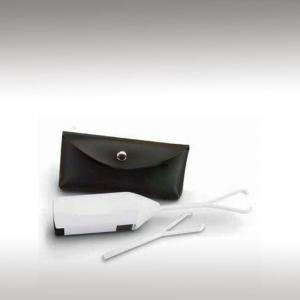
 Super compact, Mini Hand Mixer is ideal for those small jobs making soap, lotion, conditioner.
Super compact, Mini Hand Mixer is ideal for those small jobs making soap, lotion, conditioner.
Submitted by OperaDreamhouse (April 5, 2014)
Page 43 of 48

